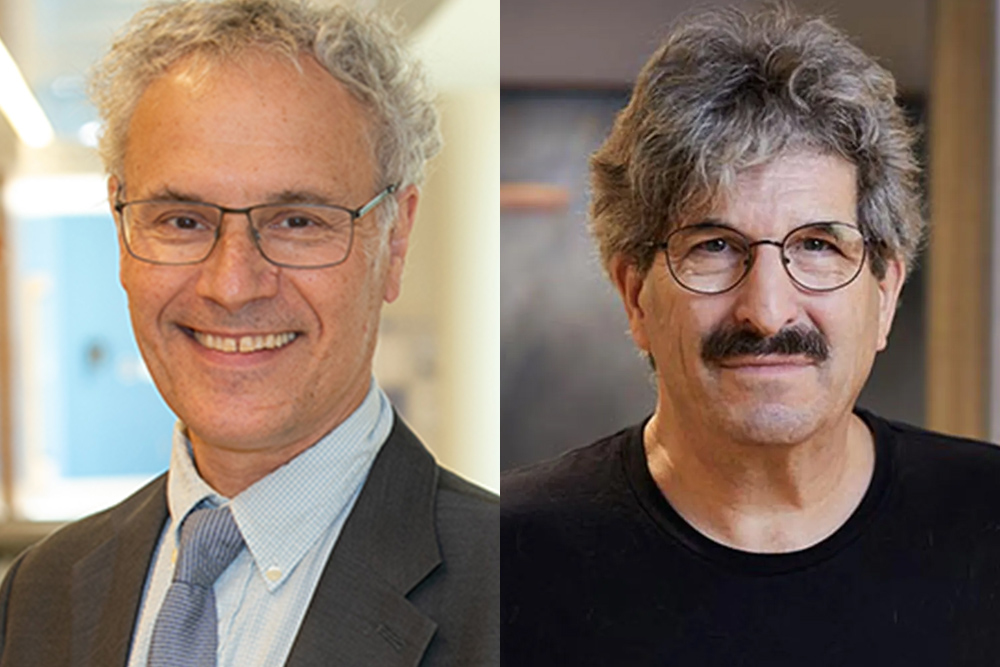
The scientists, who worked together as postdocs at MIT, are honored for their discovery of microRNA — a class of molecules that are critical for gene regulation.
Anne Trafton | MIT News
MIT alumnus Victor Ambros ’75, PhD ’79 and Gary Ruvkun, who did his postdoctoral training at MIT, will share the 2024 Nobel Prize in Physiology or Medicine, the Royal Swedish Academy of Sciences announced this morning in Stockholm.
Ambros, a professor at the University of Massachusetts Chan Medical School, and Ruvkun, a professor at Harvard Medical School and Massachusetts General Hospital, were honored for their discovery of microRNA, a class of tiny RNA molecules that play a critical role in gene control.
“Their groundbreaking discovery revealed a completely new principle of gene regulation that turned out to be essential for multicellular organisms, including humans. It is now known that the human genome codes for over one thousand microRNAs. Their surprising discovery revealed an entirely new dimension to gene regulation. MicroRNAs are proving to be fundamentally important for how organisms develop and function,” the Nobel committee said in its announcement today.
During the late 1980s, Ambros and Ruvkun both worked as postdocs in the laboratory of H. Robert Horvitz, a David H. Koch Professor at MIT, who was awarded the Nobel Prize in 2002.
While in Horvitz’s lab, the pair began studying gene control in the roundworm C. elegans — an effort that laid the groundwork for their Nobel discoveries. They studied two mutant forms of the worm, known as lin-4 and lin-14, that showed defects in the timing of the activation of genetic programs that control development.
In the early 1990s, while Ambros was a faculty member at Harvard University, he made a surprising discovery. The lin-4 gene, instead of encoding a protein, produced a very short RNA molecule that appeared to inhibit the expression of lin-14.
At the same time, Ruvkun was continuing to study these C. elegans genes in his lab at MGH and Harvard. He showed that lin-4 did not inhibit lin-14 by preventing the lin-14 gene from being transcribed into messenger RNA; instead, it appeared to turn off the gene’s expression later on, by preventing production of the protein encoded by lin-14.
The two compared results and realized that the sequence of lin-4 was complementary to some short sequences of lin-14. Lin-4, they showed, was binding to messenger RNA encoding lin-14 and blocking it from being translated into protein — a mechanism for gene control that had never been seen before. Those results were published in two articles in the journal Cell in 1993.
In an interview with the Journal of Cell Biology, Ambros credited the contributions of his collaborators, including his wife, Rosalind “Candy” Lee ’76, and postdoc Rhonda Feinbaum, who both worked in his lab, cloned and characterized the lin-4 microRNA, and were co-authors on one of the 1993 Cell papers.
In 2000, Ruvkun published the discovery of another microRNA molecule, encoded by a gene called let-7, which is found throughout the animal kingdom. Since then, more than 1,000 microRNA genes have been found in humans.
“Ambros and Ruvkun’s seminal discovery in the small worm C. elegans was unexpected, and revealed a new dimension to gene regulation, essential for all complex life forms,” the Nobel citation declared.
Ambros, who was born in New Hampshire and grew up in Vermont, earned his PhD at MIT under the supervision of David Baltimore, then an MIT professor of biology, who received a Nobel Prize in 1973. Ambros was a longtime faculty member at Dartmouth College before joining the faculty at the University of Massachusetts Chan Medical School in 2008.
Ruvkun is a graduate of the University of California at Berkeley and earned his PhD at Harvard University before joining Horvitz’s lab at MIT.
